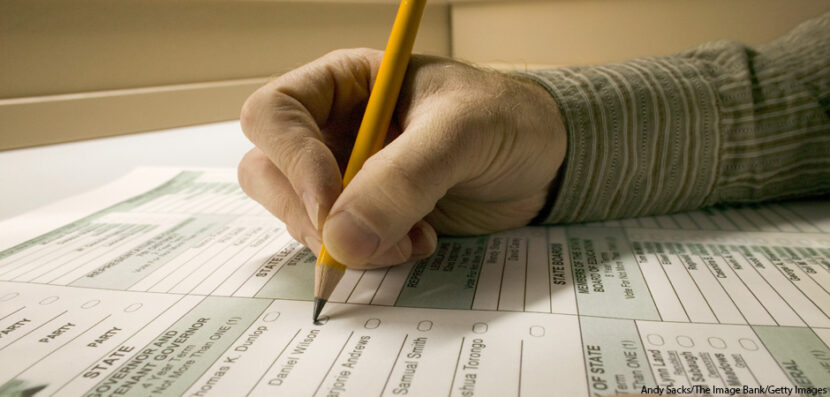
A New Way to Vote?
How would you describe the typical method for voting? Voters cast ballots for their preferred candidate and the candidate with the most votes wins . . . right? A different system called “ranked choice voting.” is gaining traction in many places. What is ranked choice voting? What are its pros and cons? And how is it being used in the New York City mayoral election? Here, Election Central takes a closer look.
What Is Ranked Choice Voting?
Instead of selecting one candidate per office, voters are instead asked to rank the list of candidates, starting with their first choice. When the ballots are counted, the first-choice votes are counted first. If one of the candidates gets more than 50 percent of all of the first-choice votes, he or she is declared the winner. If no candidate receives more than 50 percent, then the candidate with the least number of first-choice votes gets eliminated. On those ballots that chose the candidate with the least votes, the vote goes to whomever was listed as the second-choice candidate. This process continues until one of the candidates reaches a majority.
So if your first-choice candidate is eliminated, then your second-choice vote is counted. If your second-choice candidate is eliminated, then your third-choice vote is counted. And so on.)
This method is used in about twenty jurisdictions in the United States. Maine and Alaska use ranked choice voting for both statewide and presidential elections. Ranked choice voting is also used in several other nations, such as Australia, Ireland, New Zealand, and Scotland.
What Are the Pros and Cons?
The major drawback of ranked choice voting is that it is more complicated. Voters need more instruction to understand the system. Voters who are new to ranked choice voting are more likely to make mistakes on the ballot. For example, a voter who really wants her candidate to win might rank her candidate as her first, second, third, and fourth choice, which would cancel her ballot. It can also lead to deal-making between candidates: a candidate might instruct her supporters who to rank as number two. And many people who fill out a ranked choice ballot, especially if they are new to the system, might only vote for their preferred candidate, and leave the rest of the rankings blank. That means that the candidate who is ultimately chosen still may not represent a majority of the voters.
But supporters of ranked choice voting argue that even though it’s a more complicated system, it’s also fairer. That’s because the winner must be chosen by a majority of the people, as opposed to the current system where the candidate with the most votes win, even if they don’t receive a majority of votes.
A Great Experiment
New York City decided to use ranked choice voting in last week’s mayor’s race. It is the largest area in the U.S. to ever use this method. The Democratic primary ballot had thirteen candidates, and voters were asked to rank up to five. The Republican ballot had only two candidates.
When polls closed on election night, Eric Adams had the lead in the Democratic primary, followed by Maya Wiley and Kathryn Garcia. Adams received only 31.7 percent of the vote, which means that the counting will continue, with the lowest-ranking candidate eliminated and second-choice votes being distributed to the remaining candidates. This will happen once a week, on Tuesdays. Experts say the process could last well into July.
A second round of counting on June 29, 2021 produced disputed results, when the New York City Board of Elections accidentally included 135,000 sample ballots in the vote tally. It is currently unclear when a new vote count will become available.


